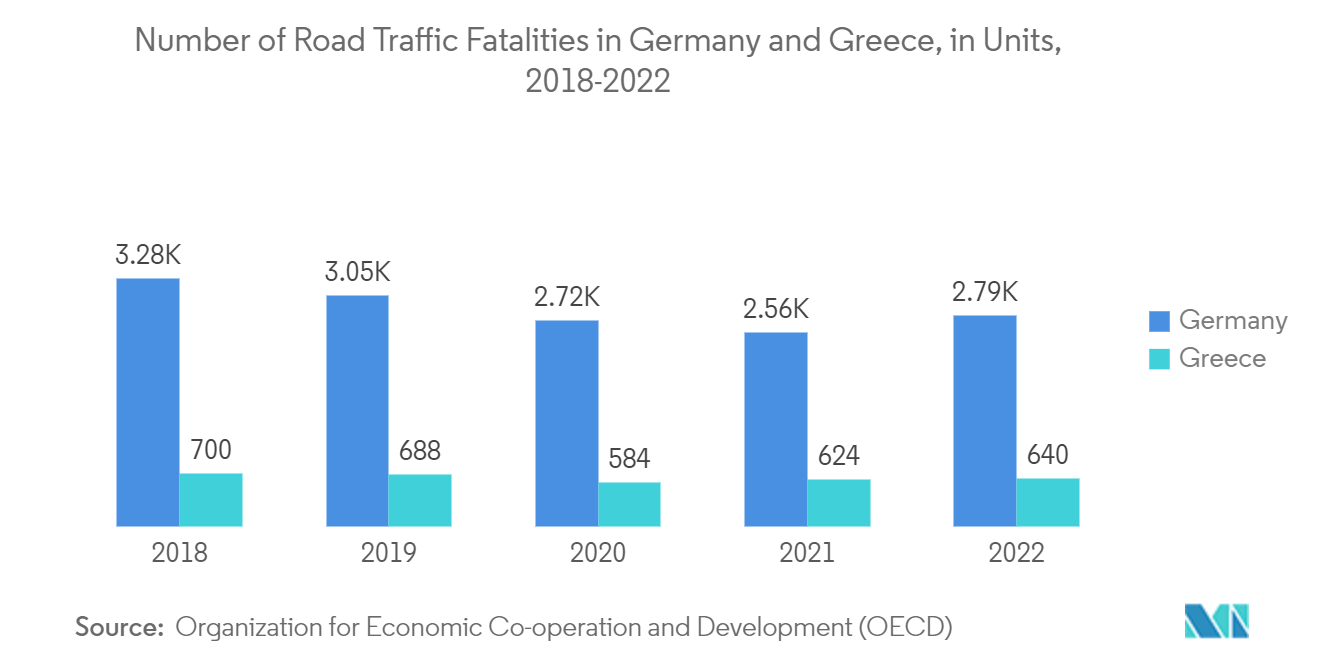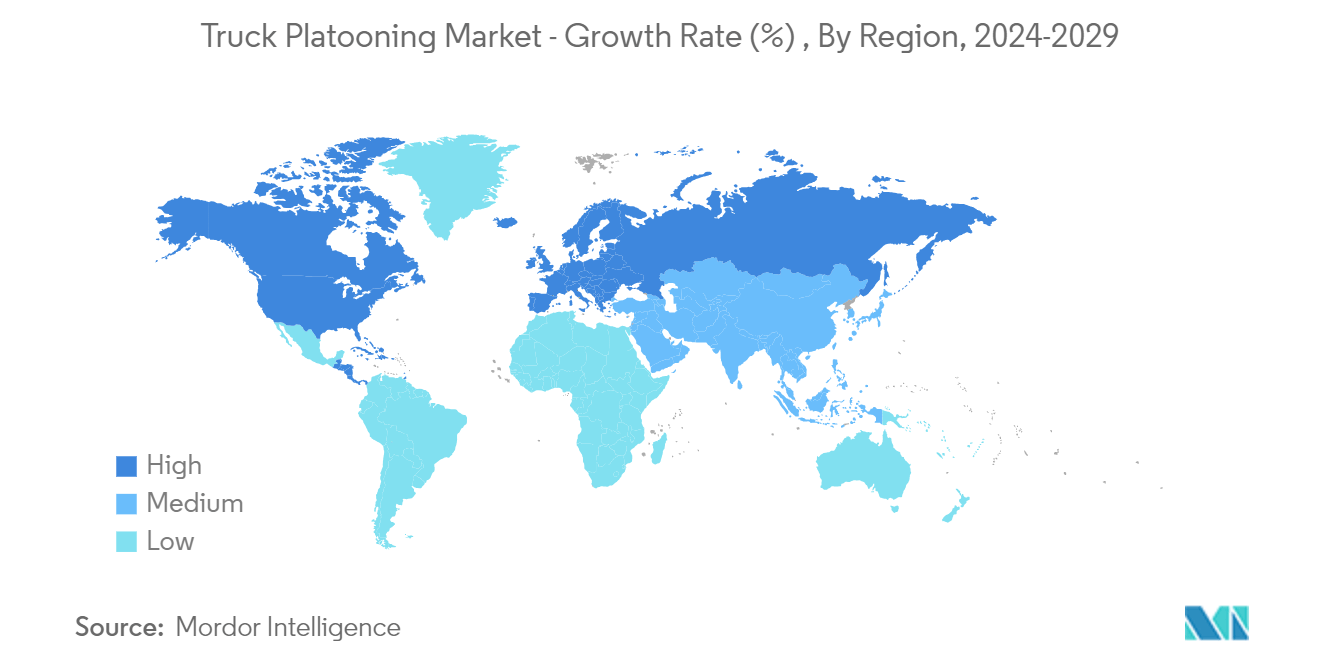Market Trends of Truck Platooning Industry
Adaptive Cruise Control Segment to Gain Traction during the Forecast Period
Adaptive cruise control (ACC) is projected to be the fastest-growing segment of the truck platooning market. Cruise control automatically assists in maintaining an optimal truck speed without manual intervention, which, in turn, positively impacts the growth of this segment. Various project initiatives by Soft Bank and authorities in Canada, among others, are being lined up to test the efficacy of truck platooning technology. Both government authorities and private players are investing hefty sums to implement truck platooning in their countries, contributing to the surging demand for adaptive cruise control.
Moreover, the growing number of traffic fatalities due to human error are being detected worldwide, leading to authorities implementing strict rules and regulations. The recent advancements in truck platooning technology are assisting in automating the cargo transportation process in the logistics industry, leading to little tominorvolvement of drivers, thus limiting the impact of human errors. Truck platooning technology enables truck movement through V2V infrastructure and other advanced technologies, such as Adaptive Cruise Control. Therefore, the entire process assists in minimizing any fatalities arising from human error.
- According to the Organization for Economic Cooperation and Development (OECD), the number of road traffic fatalities in Germany stood at 2,788 2022 compared to 2,562 in 2021, representing a Y-o-Y growth of 8.8% between 2021 and 2022. Similarly, the number of road traffic fatalities in Greece touched 640 in 2022 compared to 624 in 2021.
- According to the Indian Ministry of Road Transport and Highways, the number of deaths due to road accidents touched 168.49 thousand in 2022 compared to 153.97 thousand in 2021, recording a Y-o-Y growth of 9.4% between 2021 and 2022.
With the rapid enhancement in autonomous truck platooning technology, which does not require driver intervention, technological solutions such as adaptive cruise control have become necessary for its incorporation in these vehicles. Since there is a requirement to maintain an optimal distance between manned trucks and lead trucks, automakers are widely preferring the the integration of adaptive cruise control technologies, which is expected to foster the growth of this segment in the coming years.

Europe is Expected to become the Fastest Growing Market during the Forecast Period
Developed regions, like Europe, are heavily investing in truck platooning technology to enhance the cargo transportation movement and help reduce turn-around time in the logistics industry. The European Commission is launching several projects, such as the SARTRE Project (Safe Road Trains for the Environment), to investigate the role of platooning technology in reducing traffic jams and revolutionizing the logistics industry. Although the truck platooning market is still in its nascent phase, with several truck manufacturers, such as Volvo, increasingly preferring to develop truck platooning technology to participate in pilot technology, the European market is expected to showcase rapid growth in the coming years.
Further, rapid technological advancement coupled with the increasing investment by central government authorities and private players, among others, to deploy platooning solutions in the European region is fostering the demand for this segment. Furthermore, the stringent government regulations and rules implemented to decarbonize the transportation sector have also led to advancements in truck platooning technology. Advancements in IoT, V2V infrastructure, and the shifting preference towards automated transportation solutions are further contributing to the surging growth of this segment.
- The European Parliament adopted the European Climate Law, raising the European Union's target of reducing net greenhouse gas emissions by at least 55% by 2030 and legally achieving climate neutrality by 2050.
- Further, according to the European Automobile Manufacturers Association (ACEA), truck platooning helps reduce 16% of Co2 emissions from trailing vehicles while ensuring the reduction of 8% of Co2 emissions from lead vehicles.
Although truck platooning is being majorly adopted in developed European regions, countries such as Canada and the United States in North America are also actively focusing on implementing this solution. Research and investment in truck platooning technology in Asian countries are still nascent. The growing road freight sector, coupled with the increasing cross-border trade activity, is further expected to contribute to the surging growth of the truck platooning market in the European region during the forecast period.


